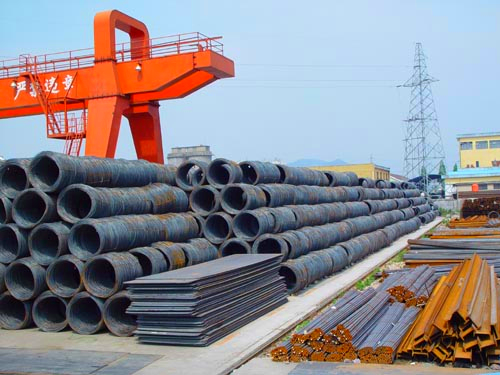【Steel Market】March Analysis: Supply-Demand Dynamics and Price Trends

With the implementation of the dual carbon policy, the proportion of electric furnace steel has been increasing year by year, and the production enthusiasm of the graphite electrode industry has been enhanced, providing support for green steel.
【Steel Market】March Analysis: Supply-Demand Dynamics and Price Trends
1. Iron Output: February Growth, March Expected to Increase Further
In February, China's average daily pig iron output showed a growth trend, increasing by 22,000 tons from the previous month to 2.2805 million tons, a 0.97% rise. Compared to the same period last year, it saw a 0.14% increase. Among all regions, East and Central China showed the highest growth. According to a survey on blast furnace maintenance and restart plans for March, 2 blast furnaces are planned to shut down, affecting a daily capacity of 12,000 tons; meanwhile, 17 blast furnaces are planned to restart, adding a daily capacity of 74,500 tons. With these changes, the expected daily iron output in March is forecasted to reach 2.3285 million tons. Looking at the long-term trend, iron output has generally been recovering since 2022, with March seeing a steady rise. However, in March 2024, the recovery process has been slower due to unmet demand expectations. Entering 2025, market conditions have improved, with steel mills maintaining a profitability rate of around 50%, higher than the same period last year.

2. Finished Steel Output: Rebar Shows Growth Potential, Hot Rolled Steel Affected by Maintenance
· Rebar Output: After the Spring Festival, steel mills have been cautious about increasing production. Even though it's the peak season and steel mills have lower inventories, last week's rebar output was 2.07 million tons, a modest increase of 90,000 tons compared to last week, but 100,000 tons less than the same period last year. It's expected that by mid-March, weekly rebar production will increase to 2.2 million tons, surpassing last year's 2.1 million tons.
· Hot Rolled Steel Output: In March, some plate mills in North and East China are planned for maintenance, which is expected to reduce hot rolled steel supply by 609,000 tons, bringing the weekly production down by 55,000 tons to 3.205 million tons, which will offset some of the reduction in export volumes.
3. Steel Demand: Strong Rebar Demand, Hot Rolled Steel Faces Export Challenges
· Rebar Demand: As temperatures rise in northern regions, construction work is expected to resume, and rebar demand will show its peak season characteristics. It is estimated that weekly rebar demand will reach 2.6 million tons in March and increase to 2.8 million tons in April, surpassing last year's levels. This is mainly due to the new infrastructure projects in various regions at the end of last year and the beginning of this year, along with the low base from last year's real estate projects.
· Hot Rolled Steel Demand: Hot rolled steel demand has encountered difficulties. The market price difference for hot rolled steel between China and Southeast Asian countries is around 180 yuan. After Vietnam imposed anti-dumping tariffs, the export price of Chinese hot rolled steel has become 600 yuan higher than Vietnam's domestic price, leading to a loss of price competitiveness. Exports are expected to decrease significantly. Starting from March, as the impact of overseas tariffs becomes more apparent, steel exports are expected to drop by 600,000 tons from February, reaching 8.5 million tons, a 14% year-on-year decrease. Hot rolled steel will be most affected.

4. Steel Exports: Short-Term Impact of Tariffs, Long-Term Focus on Production Adjustment
In recent years, China's steel exports have been growing rapidly, driven by excess domestic supply. The increase in exports is a result of domestic overproduction rather than being a driving force behind production. Although short-term tariffs will affect exports, long-term sustainability of exports depends on effectively adjusting domestic steel production. Therefore, the focus should be on domestic production policies to balance supply rather than relying on exports. In addition, the possibility of restricting steel capacity is increasing, and the reliance on export models that do not generate profits may not last. Reforming the supply side may be a more effective way to adjust production, which could also reduce imports of iron ore and coking coal, offering multiple benefits.
5. Inventory Changes: Rebar and Hot Rolled Steel Decrease, Inflection Point Approaching
By mid-March, the total inventory of rebar, hot rolled steel, and the five major steel products is expected to reach a turning point, with inventory decreasing one week earlier than last year. Currently, rebar inventory at steel mills is starting to decrease, and once demand fully recovers, the supply-demand balance of construction steel may become tight. The inventory pressure for hot rolled steel is easing, especially in South China, where demand has reached historical highs.

6. Market Outlook: March Stable with Potential Upside, Watch Supply and Demand Risks
Overall, the steel market in March is expected to be stable with a slight upward bias, but external factors may limit its potential. In terms of raw materials, iron ore is expected to remain strong in the short term, but it could be overestimated due to the high limits on iron output. For coke and coking coal, one or two more rounds of price reductions are expected, which will slightly improve steel mill profits. Both rebar and hot rolled steel should see stable demand due to the seasonal recovery. However, risks remain, such as the possibility of steel mills increasing production as profits improve, and whether downstream demand can sustain its growth. These factors could suppress the market.
The control over steel supply is crucial for stabilizing the market and can somewhat offset the negative effects of reduced exports. March is the peak season for steel demand, and even though export risks are increasing, as long as the supply side controls production effectively and demand continues to improve, the steel market is likely to remain stable in March.
Feel free to contact us anytime for more information about the EAF steel market. Our team is dedicated to providing you with in-depth insights and customized assistance based on your needs. Whether you have questions about product specifications, market trends, or pricing, we are here to help.
No related results found








0 Replies